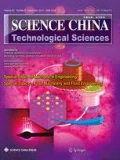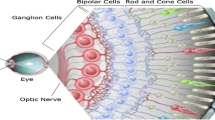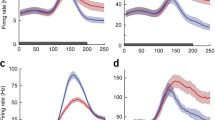Abstract
Essential to visual tasks such as object recognition is the formation of effective representations that generalize from specific instances of visual input. Neurons in primary visual cortex are typically hypothesized to efficiently encode image structures such as edge and textures from natural scenes. Here this paper proposed a novel hierarchical statistical distribution model to generalize higher-level neuron properties and encode distributed regularities that characterize local image regions. Two layers of our hierarchical model are presented to extract spiking activities of excitatory neurons decorrelated by inhibitory neurons and to construct the statistical patterns of input data, respectively. Trained on whitened natural images, parameters including neural connecting weights and distribution coding weights are estimated by their corresponding learning rules. To prove the feasibility and effectiveness of our model, several experiments on natural images are conducted. Adapting our model to natural scenes yields a distributed representation for higher-order statistical regularities. Comparison results provide insight into higher-level neurons which encode more abstract and invariant properties.
Similar content being viewed by others
References
van Hateren J H. Theoretical predictions of spatiotemporal receptive fields of fly LMCs, and experimental validation. J Comp Physiol A, 1992, 171: 157–170
Freeman J, Ziemba C M, Heeger D J, et al. A functional and perceptual signature of the second visual area in primates. Nat Neurosci, 2013, 16: 974–981
Field G D, Gauthier J L, Sher A, et al. Functional connectivity in the retina at the resolution of photoreceptors. Nature, 2010, 467: 673–677
Dan Y, Atick J J, Reid R C. Efficient coding of natural scenes in the lateral geniculate nucleus: Experimental test of a computational theory. J Neurosci, 1996, 16: 3351–3362
Olshausen B A, Field D J. Emergence of simple-cell receptive field properties by learning a sparse code for natural images. Nature, 1996, 381: 607–609
Duan H B, Li P. Bio-inspired Computation in Unmanned Aerial Vehicles. Berlin, Heidelberg: Springer, 2014
Duan H, Deng Y, Wang X, et al. Biological eagle-eye: Based visual imaging guidance simulation platform for unmanned flying vehicles. IEEE Aerosp Electron Syst Mag, 2013, 28: 36–45
Itti L, Koch C. Computational modelling of visual attention. Nat Rev Neurosci, 2001, 2: 194–203
Deng Y M, Duan H B. Avian contrast sensitivity inspired contour detector for unmanned aerial vehicle landing. Sci China Tech Sci, 2017, 60: 1958–1965
Duan H, Deng Y, Wang X, et al. Small and dim target detection via lateral inhibition filtering and artificial bee colony based selective visual attention. PLoS ONE, 2013, 8: e72035
Krüger N, Janssen P, Kalkan S, et al. Deep hierarchies in the primate visual cortex: What can we learn for computer vision? IEEE Trans Pattern Anal Mach Intell, 2013, 35: 1847–1871
Pajares G, Guijarro M, Herrera P J, et al. Combining classifiers through fuzzy cognitive maps in natural images. IET Comput Vis, 2009, 3: 112–123
Wang K, Gu X F, Yu T, et al. Classification of hyperspectral remote sensing images using frequency spectrum similarity. Sci China Tech Sci, 2013, 56: 980–988
Sohn K, Zhou G, Lee C, et al. Learning and selecting features jointly with point-wise gated boltzmann machines. In: International Conference on Machine Learning. Atlanta, 2013. 217–225
Li H, Duan H B. Verification of monocular and binocular pose estimation algorithms in vision-based UAVs autonomous aerial refueling system. Sci China Tech Sci, 2016, 59: 1730–1738
Balakrishnan N, Hariharakrishnan K, Schonfeld D. A new image representation algorithm inspired by image submodality models, redundancy reduction, and learning in biological vision. IEEE Trans Pattern Anal Machine Intell, 2005, 27: 1367–1378
Spratling M W. Image segmentation using a sparse coding model of cortical area V1. IEEE Trans Image Process, 2013, 22: 1631–1643
Lee T S. Image representation using 2D Gabor wavelets. IEEE Trans Pattern Anal Machine Intell, 1996, 18: 959–971
Derpanis K G, Gryn J M. Three-dimensional nth derivative of Gaussian separable steerable filters. In: IEEE International Conference on Image Processing. Genoa: IEEE, 2005. 553–556
Zylberberg J, Murphy J T, DeWeese M R. A sparse coding model with synaptically local plasticity and spiking neurons can account for the diverse shapes of V1 simple cell receptive fields. PLoS Comput Biol, 2011, 7: e1002250
Doi E, Gauthier J L, Field G D, et al. Efficient coding of spatial information in the primate retina. J Neurosci, 2012, 32: 16256–16264
King P D, Zylberberg J, DeWeese M R. Inhibitory interneurons decorrelate excitatory cells to drive sparse code formation in a spiking model of V1. J Neurosci, 2013, 33: 5475–5485
Gu J, Han H, Li X, et al. Hierarchical spatial pyramid max pooling based on SIFT features and sparse coding for image classification. IET Comput Vision, 2013, 7: 144–150
Riesenhuber M, Poggio T. Hierarchical models of object recognition in cortex. Nat Neurosci, 1999, 2: 1019–1025
Serre T, Wolf L, Bileschi S, et al. Robust object recognition with cortex-like mechanisms. IEEE Trans Pattern Anal Mach Intell, 2007, 29: 411–426
Deng Y, Duan H. Hybrid C2 features and spectral residual approach to object recognition. Optik-Int J Light Electron Opt, 2013, 124: 3590–3595
Farabet C, Couprie C, Najman L, et al. Learning hierarchical features for scene labeling. IEEE Trans Pattern Anal Mach Intell, 2013, 35: 1915–1929
Jarrett K, Kavukcuoglu K, Ranzato M A, et al. What is the best multistage architecture for object recognition? In: IEEE International Conference on Computer Vision. Kyoto: IEEE, 2009. 2146–2153
Karklin Y, Lewicki M S. A hierarchical Bayesian model for learning nonlinear statistical regularities in nonstationary natural signals. Neural Comput, 2005, 17: 397–423
Karklin Y, Lewicki M S. Emergence of complex cell properties by learning to generalize in natural scenes. Nature, 2009, 457: 83–86
Faivre O, Juusola M. Visual coding in locust photoreceptors. PLoS ONE, 2008, 3: e2173
Mika S, Ratsch G, Weston J, et al. Fisher discriminant analysis with kernels. In: IEEE Conference on Neural Networks for Signal Processing. Madison: IEEE, 1999. 41–48
Li F F, Fergus R, Perona P. Learning generative visual models from few training examples: An incremental Bayesian approach tested on 101 object categories. Comput Vis Image Underst, 2007, 106: 59–70
Hou X D, Zhang L Q. Saliency detection: A spectral residual approach. In: IEEE Conference on Computer Vision and Pattern Recognition. Minneapolis: IEEE, 2007. 1–8
Author information
Authors and Affiliations
Corresponding author
Rights and permissions
About this article
Cite this article
Xian, N., Deng, Y. & Duan, H. Emergence of higher-level neuron properties using a hierarchical statistical distribution model. Sci. China Technol. Sci. 62, 628–634 (2019). https://doi.org/10.1007/s11431-018-9327-9
Received:
Accepted:
Published:
Issue Date:
DOI: https://doi.org/10.1007/s11431-018-9327-9




